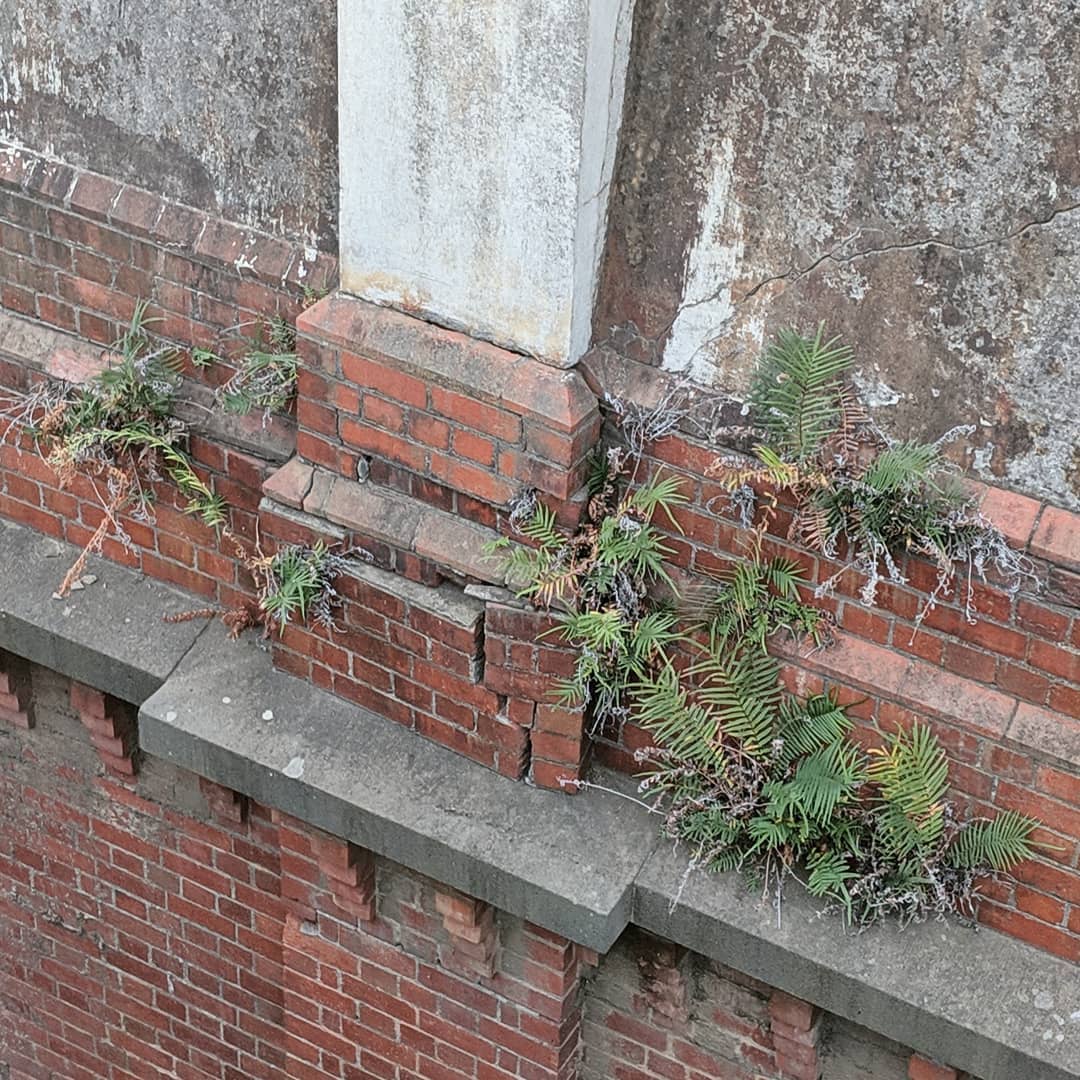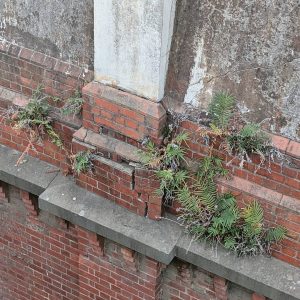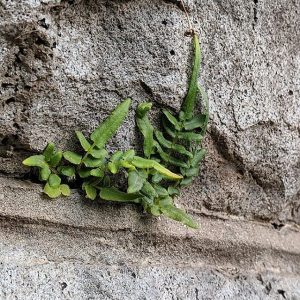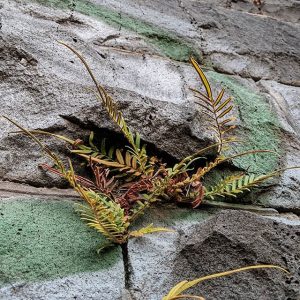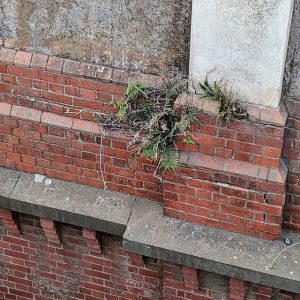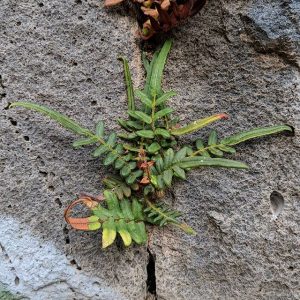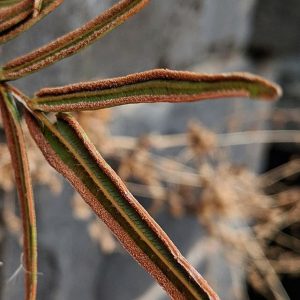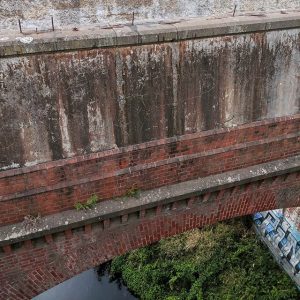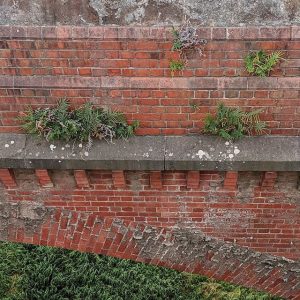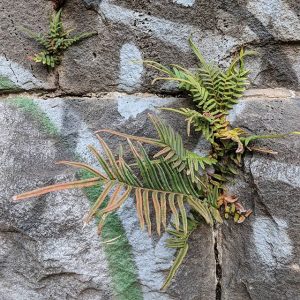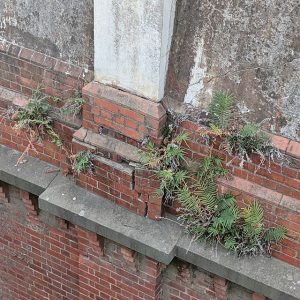Chinese or Ladder Brake (Pteris vittata), established on two structures in Melbourne’s southwest.
The last time we checked in with Pteris vittata, it was holding court on a random residential brick wall in Richmond. Now we find this native but locally-exotic brake well-established on brick and bluestone structures in one of Melbourne’s most challenging landscapes, proving again that some ferns can grow anywhere that includes some form of private rainwater catchment (cf. the Rucker’s Hill Embankment).
Both of these structures must provide an ongoing water source to sustain these ferns, which are only otherwise found in Victoria on far east Gippsland waterways. The brick aqueduct carried the city’s 1890s Main Outfall Sewer, and is both open to the sky and connected to a length of surviving underground conduit that likely receives groundwater inflow during wet weather. The bluestone road bridge likely receives some groundwater running down the former road alignment, as well as whatever rainwater seeps in from up top. The plants also get sheet flow off the sides of the bridges during rain, but this is the southwest, and that rainfall would surely not be enough on its own to support these ferns through the summers.
While the population appears confined to the south face of the aqueduct (where it is further shaded by an adjacent modern bridge span), the bluestone bridge occurrence is on the northwest face of that structure. Both support multiple plants, representing several generations of establishment and growth. Each structure also has occurrences of individuals of additional fern species, although the brake is in each case far more broadly established.
This is a fantastic occurrence, and an excellent opportunity for further investigation — get in touch or pass along to potentially interested parties, I would love to discuss this further.
View Original Post on Instagram
Search for information about Pteris vittata in the Flora of Victoria
View information and occurrences of Pteris vittata on the Atlas of Living Australia
